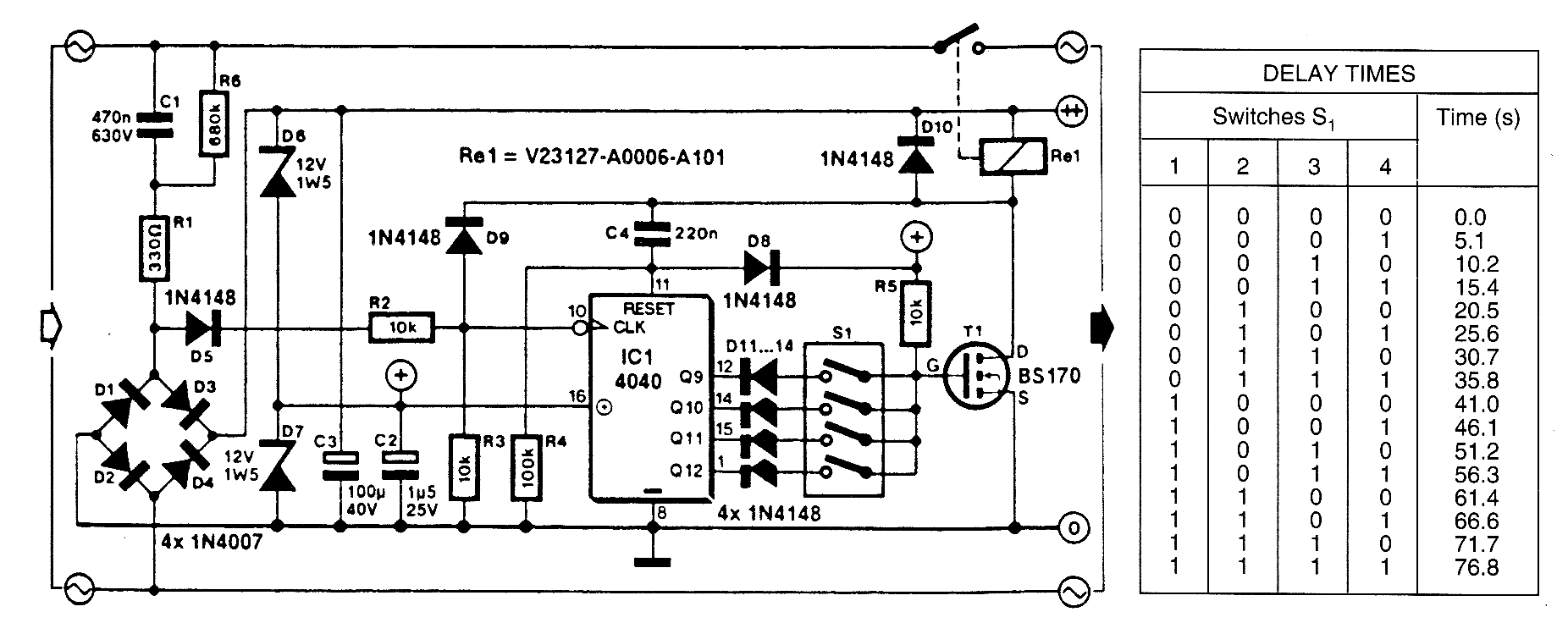
Emergency Siren circuit Simulates Police

The core component of the circuit is a dual transistor flasher with frequency modulation applied to the base of the first transistor. When the pushbutton is pressed, the oscillation frequency increases to a peak, and when the button is released, the frequency decreases due to the rising and falling voltage across the 22 µF capacitor. The rate of change in frequency is determined by the capacitor value and the 100 kΩ resistor connected to the pushbutton. The oscillation ceases if the button remains unpressed, resulting in a minimal current consumption, thus eliminating the need for a power switch.
The described circuit utilizes a dual transistor configuration to create a flashing light effect, commonly employed in visual signaling applications. The first transistor acts as an oscillator, while the second transistor functions as a driver for the load, typically an LED or similar light-emitting device. The frequency modulation is introduced through the application of voltage to the base of the first transistor, which alters its conduction state, thereby controlling the oscillation frequency.
When the pushbutton is activated, the circuit initiates a rapid charge and discharge cycle in the 22 µF capacitor. The charging phase causes the voltage across the capacitor to rise, which in turn increases the base current of the first transistor. This results in a higher frequency of oscillation, producing a brighter flash from the load. Upon releasing the button, the capacitor begins to discharge, leading to a decrease in base current and a corresponding drop in oscillation frequency. The rate at which the frequency changes is influenced by both the capacitance value and the resistance of the 100 kΩ resistor, which forms an RC time constant.
If the pushbutton remains unpressed, the oscillation will eventually halt, and the circuit will enter a low-power state. This feature is particularly advantageous as it conserves energy and eliminates the necessity for a dedicated power switch, allowing for a more compact and efficient design. The simplicity of the circuit, combined with its effective modulation capabilities, makes it suitable for a variety of applications, including decorative lighting, alert systems, and educational projects.The heart of the circuit is the two transistor flasher with frequency modulation applied to the base of the first transistor. When the pushbutton is depressed, the frequency of oscillation climbs to a peak and when the button is released, the frequency descends due to the rising and falling voltage on the 22 uF capacitor.
The rate of change is det ermined by the capacitor value and the 100k resistor from the pushbutton. The oscillation eventually stops if the button is not depressed and the current consumption drops to a tiny level so no power switch is needed. 🔗 External reference
The described circuit utilizes a dual transistor configuration to create a flashing light effect, commonly employed in visual signaling applications. The first transistor acts as an oscillator, while the second transistor functions as a driver for the load, typically an LED or similar light-emitting device. The frequency modulation is introduced through the application of voltage to the base of the first transistor, which alters its conduction state, thereby controlling the oscillation frequency.
When the pushbutton is activated, the circuit initiates a rapid charge and discharge cycle in the 22 µF capacitor. The charging phase causes the voltage across the capacitor to rise, which in turn increases the base current of the first transistor. This results in a higher frequency of oscillation, producing a brighter flash from the load. Upon releasing the button, the capacitor begins to discharge, leading to a decrease in base current and a corresponding drop in oscillation frequency. The rate at which the frequency changes is influenced by both the capacitance value and the resistance of the 100 kΩ resistor, which forms an RC time constant.
If the pushbutton remains unpressed, the oscillation will eventually halt, and the circuit will enter a low-power state. This feature is particularly advantageous as it conserves energy and eliminates the necessity for a dedicated power switch, allowing for a more compact and efficient design. The simplicity of the circuit, combined with its effective modulation capabilities, makes it suitable for a variety of applications, including decorative lighting, alert systems, and educational projects.The heart of the circuit is the two transistor flasher with frequency modulation applied to the base of the first transistor. When the pushbutton is depressed, the frequency of oscillation climbs to a peak and when the button is released, the frequency descends due to the rising and falling voltage on the 22 uF capacitor.
The rate of change is det ermined by the capacitor value and the 100k resistor from the pushbutton. The oscillation eventually stops if the button is not depressed and the current consumption drops to a tiny level so no power switch is needed. 🔗 External reference





